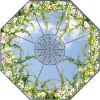 |
ALL OUR SHOPS |  | |
| Frescos | |||
 Frescoes by tearing Frescoes by tearing | |||
 Frescoes by The Imaginarium Archives Frescoes by The Imaginarium Archives | |||
 Hand painted paintings Hand painted paintings | |||
 Transferable Frescoes Transferable Frescoes | |||
| Follow MPCshop | |||
Transform your space with our exquisite online collection of frescoes, where art meets functionality. Crafted with premium materials, these frescoes not only enhance the aesthetic of any room but also stand the test of time, providing elegance and durability that distinguishes them from ordinary wall decor.
Imagine infusing your private or professional spaces with a modern look that speaks volumes about your taste. Each fresco is designed to offer a sophisticated touch, making it the perfect choice for anyone looking to elevate their environment while enjoying the practicality of easy maintenance. Gone are the days of worrying about upkeep our products are designed for longevity, ensuring that your investment in quality pays off in the long run.
Not only do our frescoes provide a stunning visual appeal, but they also guarantee safety for you and your loved ones, making them a wonderful addition to any setting. Embrace the perfect blend of beauty and function, and see how effortlessly they enhance your space.
Now is the perfect time to make a statement. Don’t miss out on the opportunity to invest in high-end decor that promises both style and substance. Shop now for an exceptional online shopping experience that includes secure payments, fast delivery, and a solid post-sales guarantee.
Elevate your surroundings today—your dream decor is just a click away!
 |
 | |
| fresco | ||
| modern frescoes | ||
| transferable fresco | ||
| apply fresco | ||
| history fresco | ||
 |
History of Frescoes |
 | |||||||||||
The fresco is also called "the eternal painting" because, being executed on plaster still fresh, the color is fixed naturally with the lime contained in the plaster and remains indelible for an unlimited time. The plaster, which must remain moist as long as you work on it, is applied little by little, in the quantity that the painter thinks he can paint in one day. the fresco requires a perfect command of the technique and the ability to paint with great speed and confidence because, unlike other painting techniques, does not admit hesitation or corrections.As the fresco dries, a hard, crystalline film forms that permanently fixes the mineral and natural pigments of which the decoration is made, acquiring, and at the same time giving, transparencies and unique brilliance. Fresco is a very ancient technique: already used in Egypt, Greece and Rome, but with Giotto in Italy it acquires the universally recognised historical-artistic importance. During the Renaissance, the fresco became very popular and there are many frescoes visible in Italy: one of the most famous is the Sistine Chapel in Rome, then others in Florence, Verona, Venice, Urbino, Milan, Pompeii, Palermo, Asolo, Padua, in the Venetian villas, in Maser, Treviso. Every great famous or anonymous artist has painted frescoes.
| |||||||||||||
 |
 | ||||||
| |||||||
| |||||||||||||||||||















